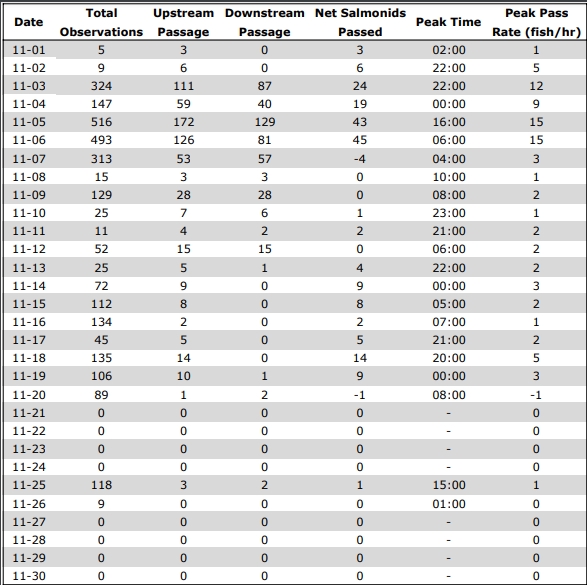Movement and Behaviour of White Suckers at the Old Welland Canal Siphons: Impacts of Flow Reversal
In February 2001, Biotactic was contracted by the Niagara Peninsula Conservation Authority to investigate the impact of the Old Welland Canal (OWC) siphon complex on fish migration. The siphon complex was built in the 1930’s, and consists of six tubes, designed to divert the flow of the Welland River under the Old Welland Canal. The Welland River normally flows towards the Niagara River, but due to hydroelectric operations at Niagara Falls flow in the Welland River frequently reverses and changes direction. For several hours each day the Welland River flows upstream through the siphon tubes, and during the remainder of the day the river flows downstream through the tubes. Inside the siphon tubes hydrostatic pressure is increased, which may produce a pressure barrier to fish migration. Water velocities in the tubes may exceed fish swimming speeds, resulting in a velocity barrier. Very little light enters the tubes, and this darkness may be a behavioural barrier. In addition, there are large pluggable holes in the siphon tubes that shunt water from the OWC into the Welland River. When the water temperature in the OWC differs significantly from the Welland River, diverted flow may function as a thermal or physiological barrier. There is circumstantial evidence to suggest that the OWC siphons function as a barrier to fish migration. This evidence consists of trapping data that reveals significant populations of small cyprinid (minnow) species, but few top predators (such as walleye) upstream from the OWC siphons. As with most barriers to fish movement, such as dams, anglers regularly congregate at the downstream end of the siphons in areas where fish movement is likely confined. The purpose of this study was to use radiotelemetry to determine if fish (white suckers in this experiment) are able to swim through the siphon tubes.
Results Summary:
The OWC siphons are not a complete barrier to fish migration. Telemetry data shows that white suckers can traverse the OWC. However, further studies may indicate fish passage for recreationally and economically important species needs to be improved.
Steps should be taken to prevent or reduce flow reversal in the Welland River. This will have a positive effect on the fish community, bank stabilization, wetlands, and general aesthetic character of the Welland River.
Steps should be taken to prevent or reduce flow reversal in the Welland River. This will have a positive effect on the fish community, bank stabilization, wetlands, and general aesthetic character of the Welland River.



